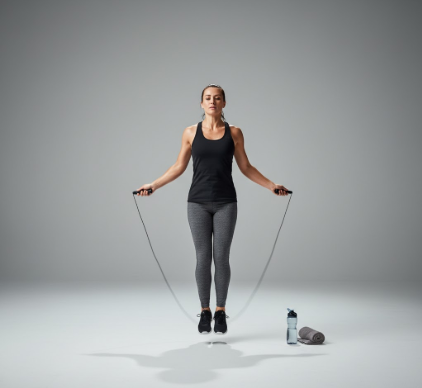Starting a fitness journey often feels like trying to catch smoke. You’re motivated, you buy the gear, maybe even sign up for a class, but then… life happens. The initial burst fades, and that shiny new routine gets dusty. Finding a sustainable rhythm, something that clicks with your real life, not just your aspirational one, is the secret sauce. It’s less about punishing workouts and more about discovering movement you actually don’t dread, weaving it into your days until it feels less like a chore and more like a natural part of who you are.
Forget the ‘go hard or go home’ mentality for a moment. That intensity is great for some, sometimes, but it’s often the enemy of consistency for most of us starting out or restarting. The real challenge isn’t the single tough workout; it’s showing up again tomorrow, and the day after that, even when you don’t feel like a superhero. That’s where finding your personal fitness rhythm comes into play. It’s about tuning into your body, your schedule, and your preferences to create something that flows, not forces.
Discovering Your Movement Mojo
Think about music. Everyone has different tastes. Some love banging techno, others prefer gentle acoustic melodies. Fitness is similar. What gets one person excited might feel like torture to another. The first step in building consistency is exploring different types of movement to find what genuinely resonates with you.
Experimentation is Key
Don’t just default to running because everyone else seems to be doing it, or lift heavy weights if the gym environment intimidates you right now. Consider these options:
- Walking or Hiking: Simple, accessible, and incredibly effective. Explore your neighbourhood, find local trails, listen to a podcast or music.
- Dancing: Put on your favourite tunes and move freely at home, or join a Zumba, salsa, or hip-hop class. It’s exercise in disguise.
- Cycling: Indoors on a stationary bike or outdoors exploring paths and roads. It’s low-impact and great for cardiovascular health.
- Swimming: A fantastic full-body workout that’s easy on the joints.
- Yoga or Pilates: Focus on flexibility, strength, and mind-body connection. Many online options exist.
- Team Sports (casual): Join a local recreational league for basketball, soccer, volleyball, etc. The social aspect can be a huge motivator.
- Bodyweight Exercises: No equipment needed! Squats, lunges, push-ups (on knees is fine!), planks – build strength anywhere.
- Gardening or Active Housework: Yes, vigorous gardening, mowing the lawn, or even a deep house clean can count!
The goal here isn’t mastery overnight. It’s sampling. Try something for a week or two. How did it feel? Did you look forward to it, even a little? Did it fit realistically into your schedule? Be honest with yourself. If you hated every second, cross it off the list (for now) and try something else. If you found moments of enjoyment, or at least felt good afterwards, that’s a potential contender.
Finding Your Time Slot: The Schedule Puzzle
Once you have an idea of
what you might enjoy, the next piece is
when. This is often where routines crumble. We aim for the ‘ideal’ time slot (like 5 AM before work) that doesn’t actually align with our natural energy levels or life demands.
Morning, Noon, or Night?
Consider your chronotype and daily obligations:
- Morning Person? Working out first thing can energize you for the day and ensures it gets done before other distractions pop up.
- Midday Energy? A lunch break workout can break up the workday and combat the afternoon slump. This might involve a quick walk, a short bodyweight circuit, or a nearby gym session if feasible.
- Evening Unwind? Some find exercise a great way to de-stress after work. A gym class, a run, or a relaxing yoga session could be perfect.
Strongly consider practicality. Is the gym busiest when you plan to go? Do you need childcare? Does your energy totally tank by 8 PM? Don’t set yourself up for failure by choosing a time that consistently clashes with reality. It’s better to have a ‘good enough’ time slot you can stick to than a ‘perfect’ one you miss constantly.
Research consistently shows that linking a new habit, like exercise, to an existing one can significantly increase adherence. This technique, known as habit stacking, leverages established routines. For example, decide to do 10 minutes of stretching immediately after brushing your teeth each morning. The existing habit acts as a trigger for the new desired behavior, making it easier to automate.
Building Consistency: The Habit Loop
Finding an activity and a time slot is the foundation. Now, let’s build the structure: consistency. This is about making it automatic, reducing the mental energy needed to decide whether or not to exercise each day.
Start Small, Really Small
The biggest mistake is trying to do too much, too soon. If your goal is to run a 5k, don’t start by trying to run 5k every day. Start with a 10-15 minute walk/run. If your goal is 3 gym sessions a week, start with one. Seriously. Aim for ridiculously achievable.
Why? Because success breeds success. Each time you complete your small, planned activity, you get a little dopamine hit, a sense of accomplishment. This reinforces the behaviour. Missing an overly ambitious goal, on the other hand, leads to frustration and makes you more likely to quit. You can
always add more later once the basic habit is established. Think consistency over intensity, especially in the beginning.
Prepare in Advance
Reduce friction points. If you plan a morning workout, lay out your clothes the night before. Pack your gym bag and leave it by the door. If you’re doing a home workout, have your mat ready or the video queued up. The fewer decisions and steps you need to take at the moment, the more likely you are to follow through, especially when motivation is low.
Track Your Progress (But Gently)
Seeing progress is motivating. This doesn’t have to be about weight loss or miles run (though it can be). It could simply be tracking consistency. Put an ‘X’ on a calendar for every day you do your planned activity. Use a simple app. Celebrate streaks – 5 days in a row, 10 days, a full month! Focus on the
behaviour (showing up) rather than just the outcome.
Navigating Roadblocks: Because Life Happens
No one is perfectly consistent forever. You’ll get sick, travel, have busy periods at work, or simply have days where you feel unmotivated. The key is not to let a missed day turn into a missed week or month.
The ‘Never Miss Twice’ Rule
This is a powerful mindset shift. Okay, you missed today. Life got in the way. It happens. The goal now is simply:
don’t miss tomorrow. Get right back on track with your next planned session, even if it’s shorter or less intense than usual. One missed workout is a blip; two starts to form a pattern of inactivity.
Adjust, Don’t Abandon
If your routine suddenly feels impossible due to a change in schedule or energy levels, don’t just ditch it entirely. Adjust. Can you shorten the workout? Can you switch to a different, more accessible activity temporarily? Can you change the time? Doing
something is almost always better than doing nothing when it comes to maintaining the habit.
Listen to Your Body
Consistency doesn’t mean pushing through genuine pain or exhaustion. Learn the difference between ‘I don’t feel like it’ laziness and actual physical signals that you need rest. Rest days are crucial for recovery and preventing injury. Sometimes, the most productive thing you can do for your fitness is take a day off.
Be mindful of becoming overly obsessive with tracking or workout schedules. Exercise should enhance your life, not control it. If you find yourself feeling extreme guilt over missed workouts or constantly prioritizing exercise over social connections or rest, it might be time to reassess your approach. A healthy routine is flexible and sustainable.
The Long Game: Fitness as a Lifestyle
Finding your fitness rhythm and building consistency isn’t a 30-day challenge; it’s an ongoing process. It’s about integrating movement into your life in a way that feels good and sustainable for the long haul. There will be periods of high motivation and periods where it feels like a slog. There will be times you try new activities and times you stick with old favourites.
The ultimate goal is to reach a point where regular movement feels less like a ‘should’ and more like a part of your identity – something you do for your physical and mental well-being because you value how it makes you feel. It’s not about achieving a perfect physique or athletic feat (though those can be bonuses!); it’s about respecting your body, enjoying movement, and building a foundation of health that supports you through all of life’s rhythms. Keep experimenting, keep adjusting, and most importantly, keep showing up for yourself, one small step at a time.









